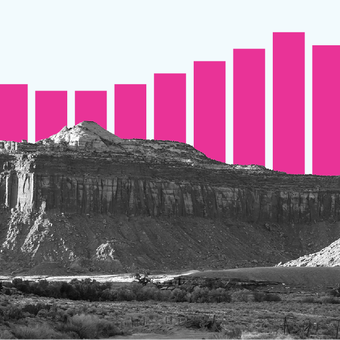July 2023 was the hottest July on record. The National Oceanic and Atmospheric Administration (NOAA) estimates that it was likely the warmest month ever recorded, with global ocean surface temperatures also hitting record highs.
For workers, extreme weather-related heat can affect their performance — and even be deadly.
Extreme heat refers to temperatures that are hotter and/or more humid than average. Ready.gov defines extreme heat as a period of “high heat and humidity with temperatures above 90 degrees for at least two to three days.”
How many workers have been injured due to weather-related extreme heat?
In 2020, the US Bureau of Labor Statistics (BLS) counted 1,940 private sector cases and 390 state and local government cases in which injuries or illnesses due to environmental heat exposure resulted in days away from work. On average, affected workers took two days off.
Broken down by industry, the private industry supersector known as trade, transportation, and utilities recorded the highest number of heat-related injury cases, with 440 reports. This category includes truck drivers, bus drivers, railroad conductors, airline pilots, retail salespeople, stock clerks, electrical power-line installers and repairers, and meter readers.
The construction supersector had the second-highest number of cases at 410. This sector consists of carpenters, construction laborers, operating engineers and other construction equipment operators, electricians, and plumbers, among others.
In state and local government jobs, service workers reported the most injuries or illnesses due to heat, with 230 cases. This group of workers includes law enforcement, animal control workers, and parking enforcement officers.
When factoring in the number of workers in each industry, mining, logging, and construction workers have the highest rates of environmental heat injuries.
How many workers die from heat?
In 2021, BLS recorded 36 work-related deaths due to environmental heat exposure. Since 2011, there have been 436 deaths caused by heat. This includes all sectors of workers.
When considering overall work fatalities that include risks beyond heat, transportation incidents account for the most deaths on the job. These deaths — which include vehicle or aircraft incidents and road workers being struck by a car — accounted for 38.2% of the 5,190 work-related fatalities in 2021.
How hot is too hot to work?
Working in extreme heat without taking necessary precautions can lead to dehydration, heat stroke, heat cramps, heat exhaustion, and death, according to the Centers for Disease Control and Prevention (CDC). Heat can also increase the risk for injury in less apparent ways; a worker’s ability could be impacted by sweaty palms or fogged-up safety glasses.
The Department of Health and Human Services, along with the CDC and the National Institute for Occupational Safety and Health, developed a set of recommended standards for workplaces to follow in hot environments, whether indoors or outdoors.
The guide provides considerations employers must take into account to ensure worker safety. These factors include the worker’s appropriate clothing or safety equipment and their level of heat acclimatization. The guide also recommends taking preventative measures during high heat exposure periods, like instituting regular temperature checks for employees and increasing rest periods.
A key rule is that the body must maintain a core temperature of around 98.6°F (+/- 1.8°F) to function normally. To keep this temperature, the body needs to constantly exchange heat with its surroundings. This heat exchange is influenced by how much metabolic heat the body produces, the temperature and humidity of the environment, and other factors like air velocity (think a brisk breeze from an industrial fan) and clothing.
Learn more about worker safety in the US, and get the latest data by signing up for our weekly newsletter.
Related environment articles
Read data analyses written by the USAFacts team.
Page sources and methodology
All of the data on the page was sourced directly from government agencies. The analysis and final review was performed by USAFacts.
Bureau of Labor Statistics
Survey of Occupational Injuries and Illnesses
Centers for Disease Control and Prevention
Occupational Exposure to Heat and Hot Environments


